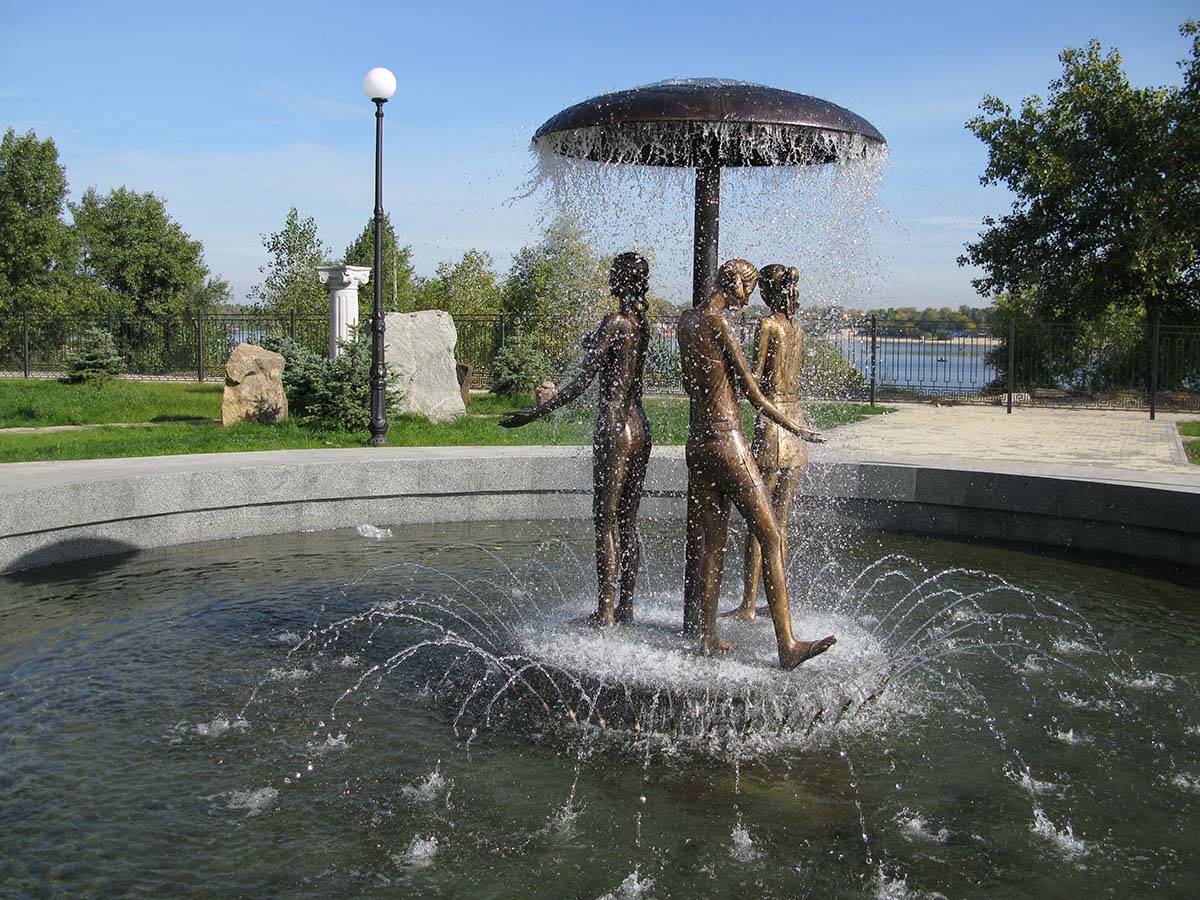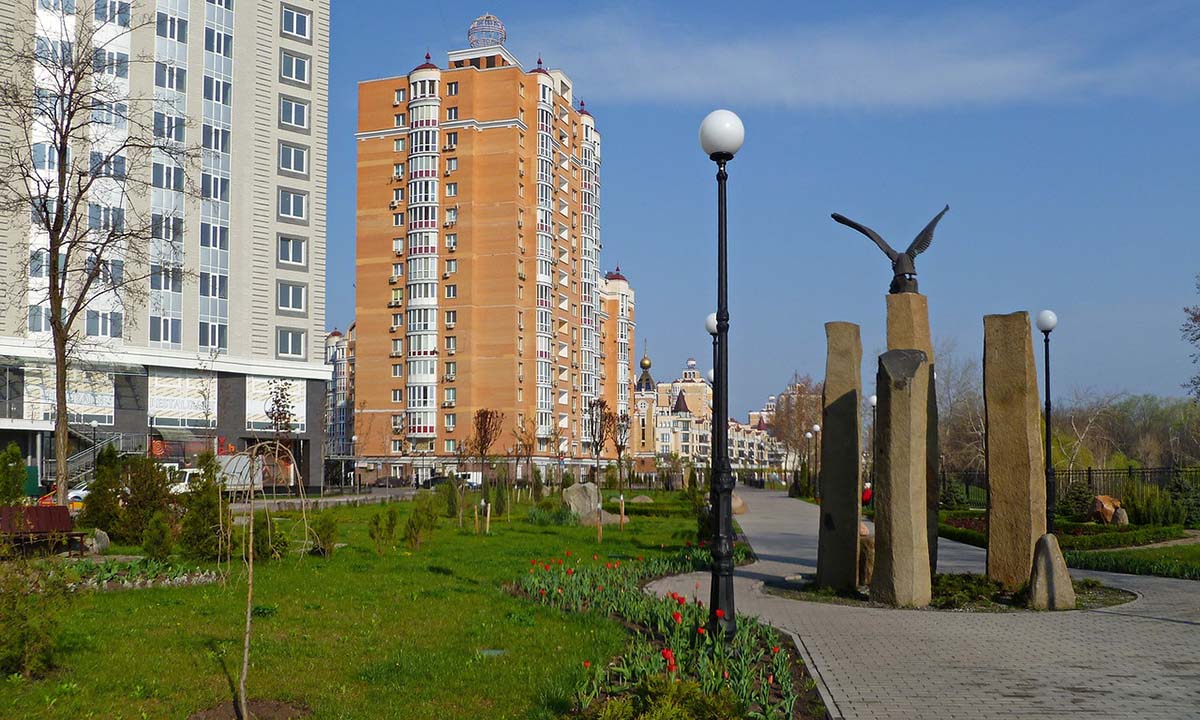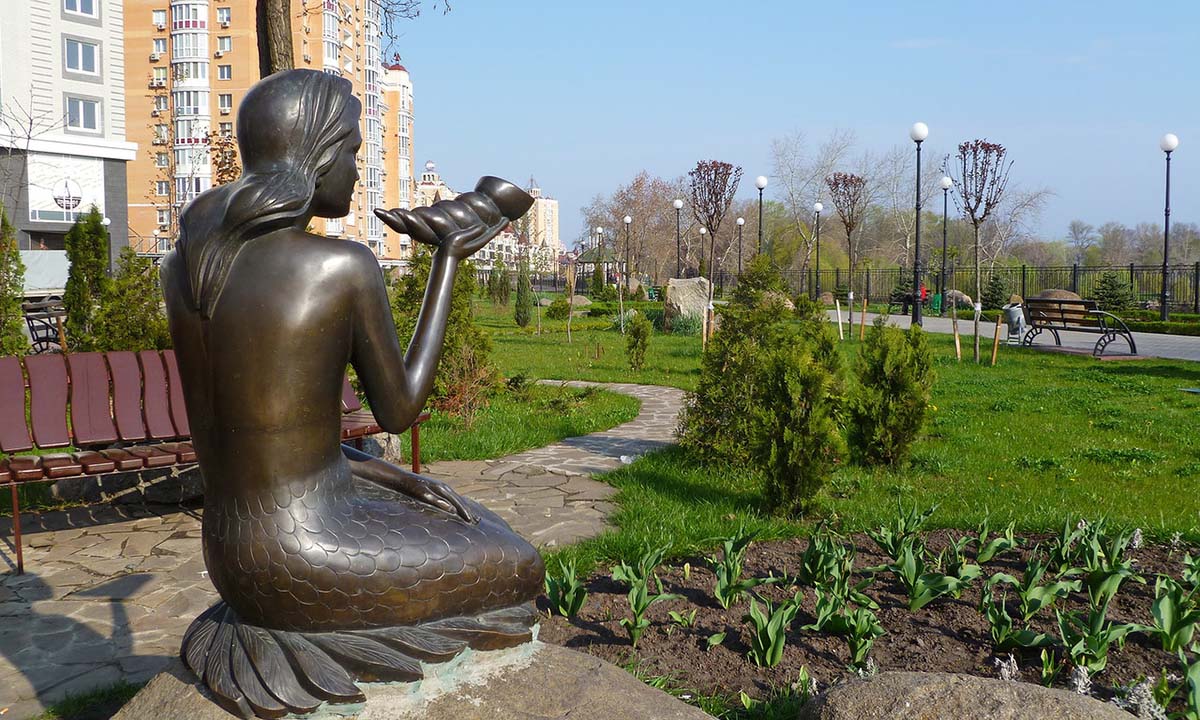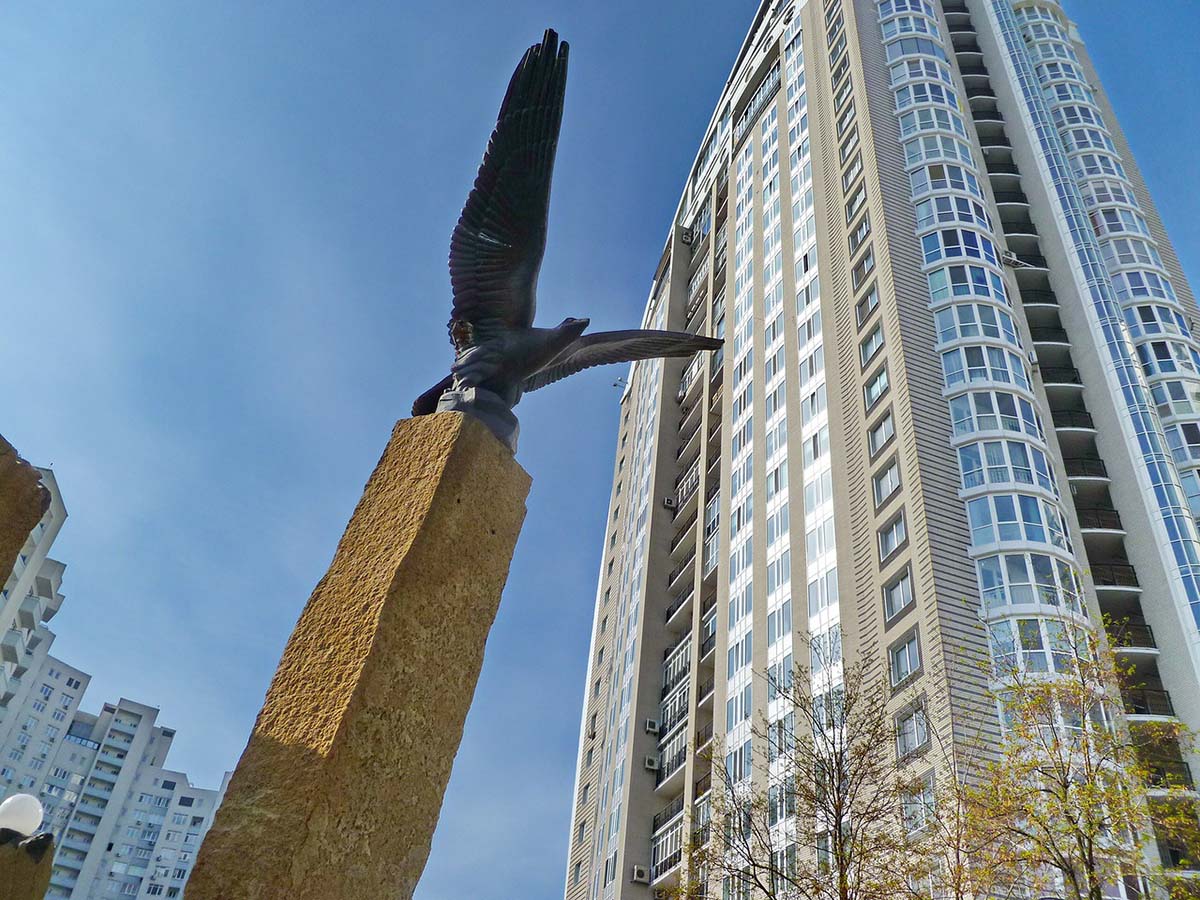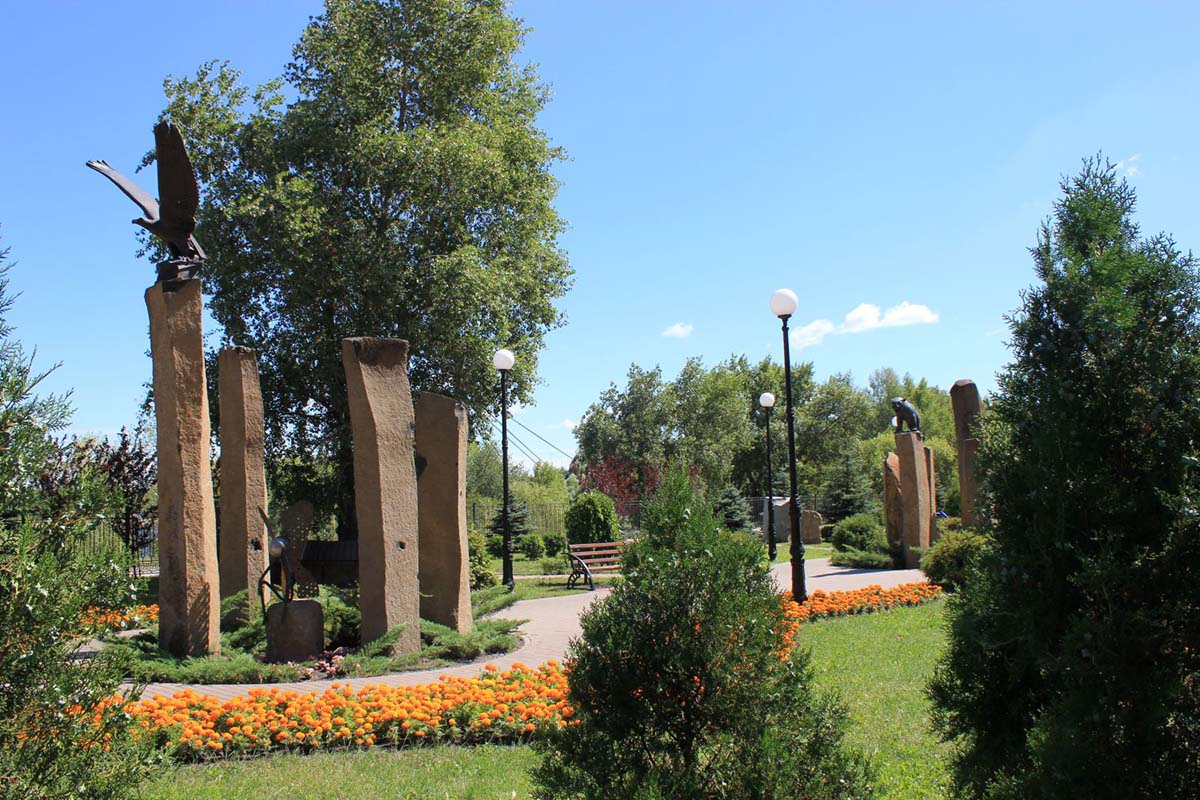The rock garden was created on Obolonskaya embankment in mid-2011. It was designed in the shape of a sail, which is very symbolic, since various water competitions are often held in the bay. There are 24 high basalt columns and 5 artificial ones, which are made in antique style. There are about 20 benches for vacationers, and the area is illuminated by many lanterns.
Untreated stones are laid out throughout the garden, which were brought here specially from all over Ukraine, and the inscriptions on them will tell you where exactly. The vegetation here is dominated by spruce and juniper. A mermaid, an eagle and a tiger “settled” in the rock garden. In addition, the recreation area is decorated with a fountain in the form of three girls under an umbrella. In December 2017, the garden was replenished with another exhibit: a sculpture of an adult ant reading a book to a “baby”, which was made in the general style of the garden. Another rock garden in Kyiv is located in Kyoto Park.
What is a rock garden?
A rock garden is a cultural and aesthetic structure in Japan, a type of Japanese garden that appeared during the Muromachi period (1336–1573). Typically, a rock garden is a flat area, most of which is covered with sand or small pebbles. But the main element is, at first glance, groups of rough stones randomly located on it. However, the disorder is only apparent; in fact, the arrangement and composition of stones in groups are subject to certain rules based on the ideological concepts of Zen Buddhism. Stones are arranged in groups of three, in accordance with the Buddhist triad. Using a rake, grooves are made on the surface of the garden, running along the long side of the garden and forming rings around the stones. It is traditionally believed that the surface of the garden symbolizes the ocean, and the stones symbolize the islands, but a visitor to the garden can imagine something of their own in its place. The rock garden continues the architecture of the house and depends on its interior. Functionally, rock gardens are intended for meditation, detachment from the bustle of the world and everyday problems. The design of such buildings, subject to the norms of Zen Buddhism, emphasizes the Japanese desire for admiring nature, reflection, and solitude. Here such principles as the ability to see the beauty of the ordinary and the grace of simplicity appear explicitly. Also, one of the main features of a rock garden is that no matter where the observer stands, his gaze will fall on an equal number of stones.
Where is the rock garden?
Obolonskaya embankment, 1
